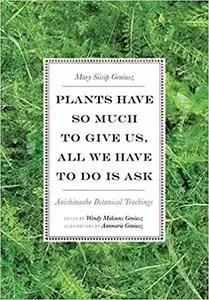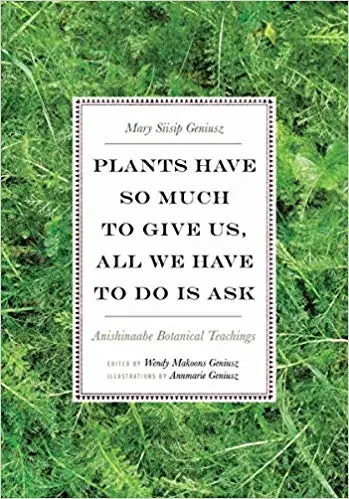Mary Siisip Geniusz, Wendy Makoons Geniusz, "Plants Have So Much to Give Us, All We Have to Do Is Ask: Anishinaabe Botanical Teachings"
2015 | ISBN-10: 081669673X, 0816696764 | 344 pages | PDF | 7 MB
2015 | ISBN-10: 081669673X, 0816696764 | 344 pages | PDF | 7 MB
Mary Siisip Geniusz has spent more than thirty years working with, living with, and using the Anishinaabe teachings, recipes, and botanical information she shares in Plants Have So Much to Give Us, All We Have to Do Is Ask. Geniusz gained much of the knowledge she writes about from her years as an oshkaabewis, a traditionally trained apprentice, and as friend to the late Keewaydinoquay, an Anishinaabe medicine woman from the Leelanau Peninsula in Michigan and a scholar, teacher, and practitioner in the field of native ethnobotany. Keewaydinoquay published little in her lifetime, yet Geniusz has carried on her legacy by making this body of knowledge accessible to a broader audience. Geniusz teaches the ways she was taught-through stories. Sharing the traditional stories she learned at Keewaydinoquay\u2019s side as well as stories from other American Indian traditions and her own experiences, Geniusz brings the plants to life with narratives that explain their uses, meaning, and history. Stories such as \u201cNaanabozho and the Squeaky-Voice Plant\u201d place the plants in cultural context and illustrate the belief in plants as cognizant beings. Covering a wide range of plants, from conifers to cattails to medicinal uses of yarrow, mullein, and dandelion, she explains how we can work with those beings to create food, simple medicines, and practical botanical tools. Plants Have So Much to Give Us, All We Have to Do Is Ask makes this botanical information useful to native and nonnative healers and educators and places it in the context of the Anishinaabe culture that developed the knowledge and practice.



